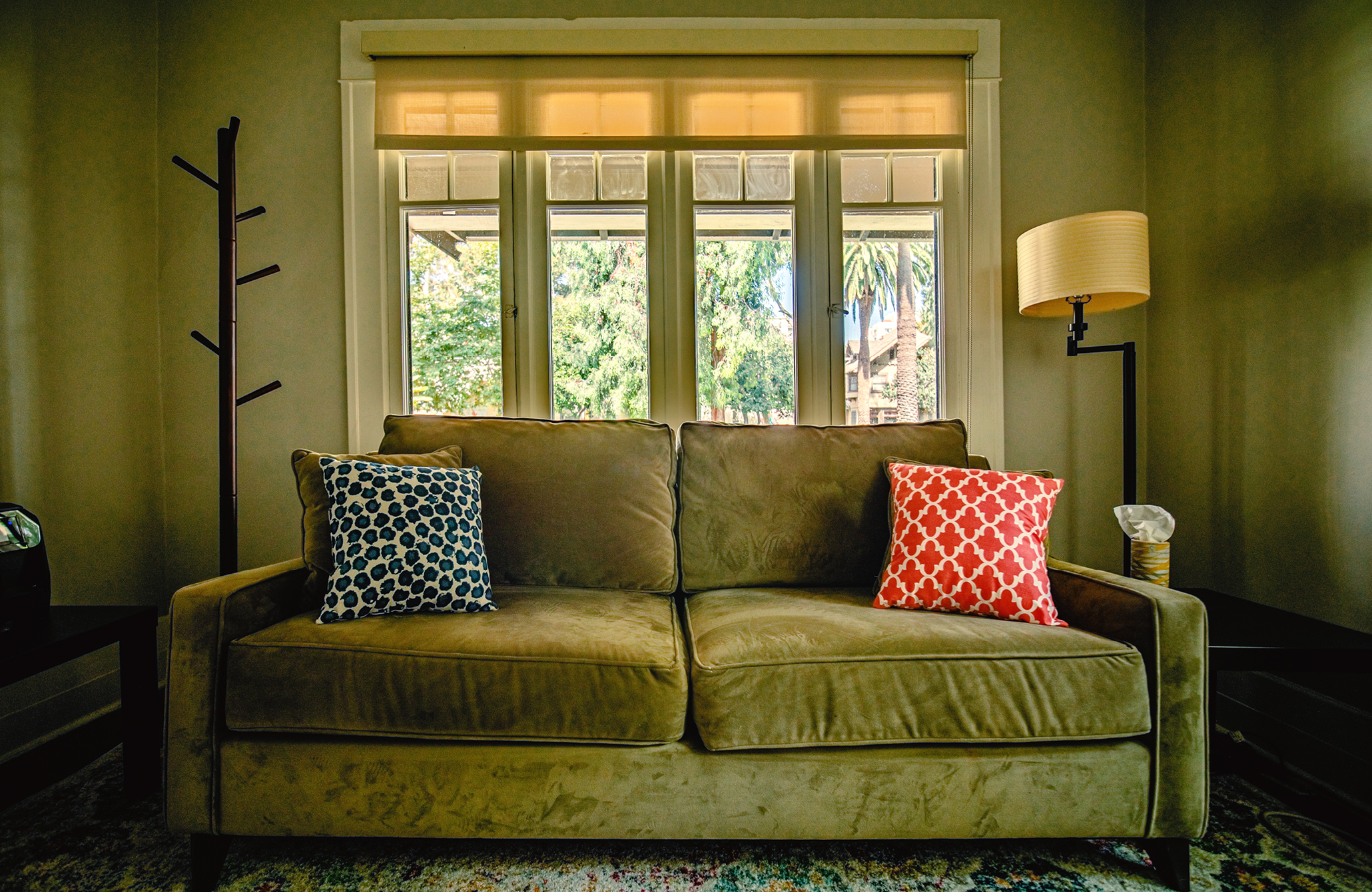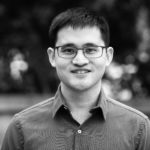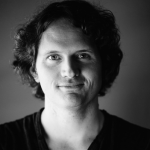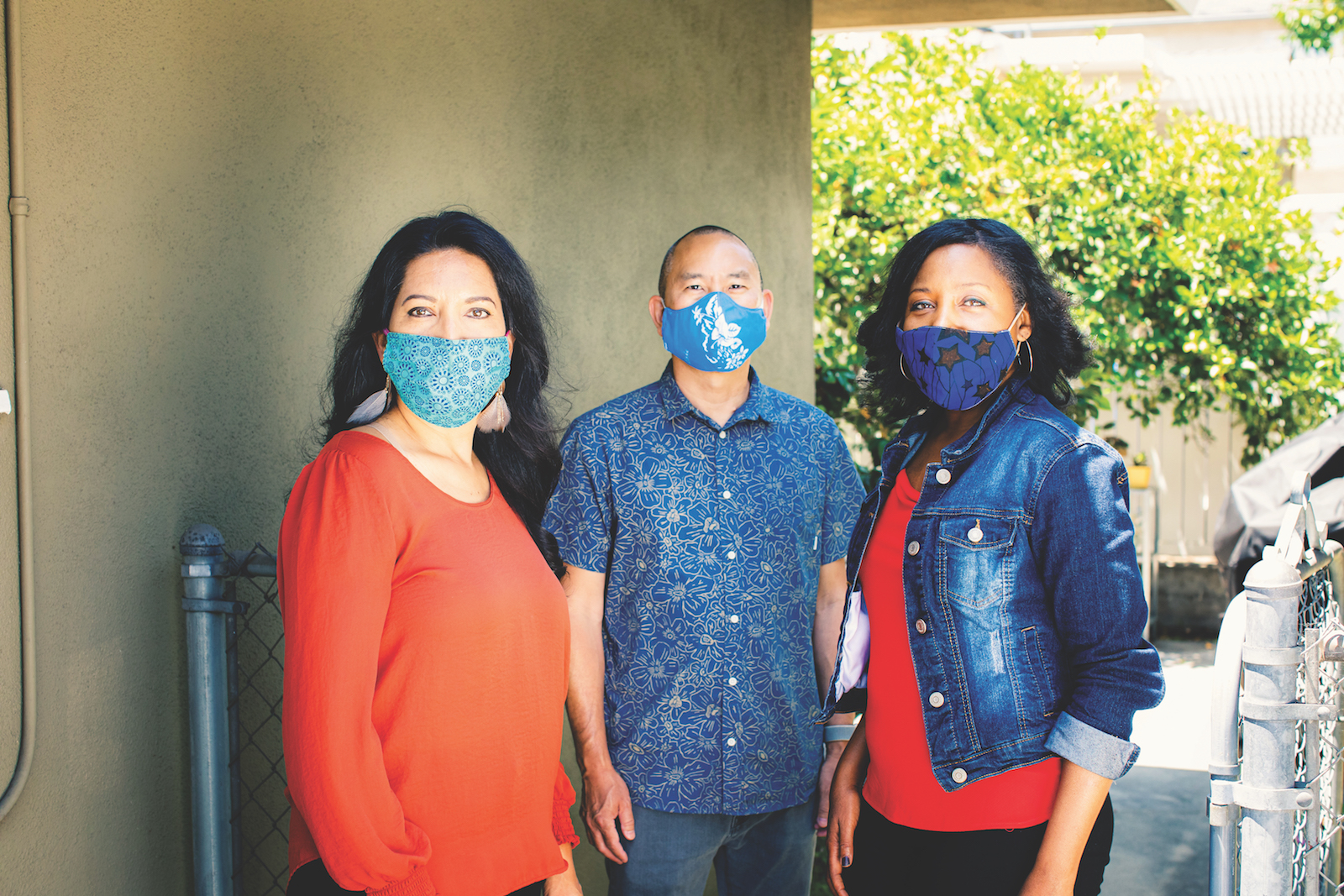
In early march, 16 Fuller staff members gathered at the Mater Dolorosa Retreat Center at the foot of the San Gabriel Mountains. They came together for a retreat organized by the Fuller chaplains—one of many that were scheduled throughout the year for students, staff, and faculty. The chaplains began the day with meditation and prayer, then released the group to the expansive grounds for hours of silent devotional time. Some found a quiet bench to pray on, while others walked the stations of the cross or simply took in the beauty of the place—the blue sky, chirping birds, deer resting under the shade of trees. “It was so needed and rejuvenating,” shares Zach Hammill, a staff participant who’d attended another of these retreats the year before. “It felt like an invitation from God to just be.”
Walking with people toward these spaces of peace is what the chaplains do. The team of Brenda Bertrand, Kevin Doi (MDiv ’94), and Inés Velásquez-McBryde (MDiv ’19) imagine these moments as “pools of water in the desert.” In an institution that has been rife with disruption over recent years, they hope to offer what they call a “nonanxious presence.”
Carrying decades of collective ministry experience between them, Brenda and Kevin arrived at Fuller in 2018.1 Inés, who also pastored for years before coming to Fuller for her MDiv, joined the team in 2019. Beginning their ministry as seminary chaplains when they did meant coming at a uniquely trying time in the school’s history. The baccalaureate protests had occurred earlier in 2018, and Fuller was in the thick of its planned relocation to Pomona. “The Fuller I know is a Fuller that’s always been in some level of crisis—a Fuller that’s been in pain, in transition,” says Brenda. When she and Kevin, and later Inés, started out, they knew they needed a particular sensitivity to see people’s different pains and also to witness God’s movement in the midst of a hard season. Their presence has been a balm for many at Fuller, through their organized retreats, their weekly one-on-one appointments, and the presence they’ve offered in and after all-seminary chapels. “They’ve taken a great deal of weight off many of us,” says Julie Tai, director of chapel. “People trust our chaplains to lead them well through times of restoration and rest.”
The chaplains have a unique vantage point in the Fuller community, as they are tasked with providing care not only for students but for staff, administration, and faculty as well. In their shared office on campus is a green couch set against a large window, and this, they say, is an image that aptly depicts their role as chaplains. The window offers a view of the David Allan Hubbard Library, Payton Hall, the Arol Burns Mall, and Slessor Hall—spaces where students study, professors teach, the president leads; spaces where the community works, and eats, and worships. The view is a reminder for the chaplains of every person they are called to minister to. And the green couch is the symbol of that sacred space they create for people, open to all. “Everyone is welcome on that green couch!” Brenda says, stressing that their meetings are a safe space where everything can be brought forth—“all of that anger and joy, all that brokenness and all that belovedness.” While being a pastor to pastors and ministry leaders is a tall order, each of the chaplains has felt God’s call to this work of providing a nonanxious presence in this season of disruption.

Jerome Blanco (MDiv ’16) is a writer and social media strategist for FULLER studio

Nate Harrison is a video storyteller for FULLER Studio and Senior Photographer for FULLER Magazine. His award-winning photography and filmmaking include showcased work for indiewire, The New York Times, UCDA Design Competition, and include clients such as Time Warner, Sundance Institute, and Nettwerk Music Group. His personal work can be found at NateCHarrison.com.
In early march, 16 Fuller staff members gathered at the Mater Dolorosa Retreat Center at the foot of the San Gabriel Mountains. They came together for a retreat organized by the Fuller chaplains—one of many that were scheduled throughout the year for students, staff, and faculty. The chaplains began the day with meditation and prayer, then released the group to the expansive grounds for hours of silent devotional time. Some found a quiet bench to pray on, while others walked the stations of the cross or simply took in the beauty of the place—the blue sky, chirping birds, deer resting under the shade of trees. “It was so needed and rejuvenating,” shares Zach Hammill, a staff participant who’d attended another of these retreats the year before. “It felt like an invitation from God to just be.”
Walking with people toward these spaces of peace is what the chaplains do. The team of Brenda Bertrand, Kevin Doi (MDiv ’94), and Inés Velásquez-McBryde (MDiv ’19) imagine these moments as “pools of water in the desert.” In an institution that has been rife with disruption over recent years, they hope to offer what they call a “nonanxious presence.”
Carrying decades of collective ministry experience between them, Brenda and Kevin arrived at Fuller in 2018.1 Inés, who also pastored for years before coming to Fuller for her MDiv, joined the team in 2019. Beginning their ministry as seminary chaplains when they did meant coming at a uniquely trying time in the school’s history. The baccalaureate protests had occurred earlier in 2018, and Fuller was in the thick of its planned relocation to Pomona. “The Fuller I know is a Fuller that’s always been in some level of crisis—a Fuller that’s been in pain, in transition,” says Brenda. When she and Kevin, and later Inés, started out, they knew they needed a particular sensitivity to see people’s different pains and also to witness God’s movement in the midst of a hard season. Their presence has been a balm for many at Fuller, through their organized retreats, their weekly one-on-one appointments, and the presence they’ve offered in and after all-seminary chapels. “They’ve taken a great deal of weight off many of us,” says Julie Tai, director of chapel. “People trust our chaplains to lead them well through times of restoration and rest.”
The chaplains have a unique vantage point in the Fuller community, as they are tasked with providing care not only for students but for staff, administration, and faculty as well. In their shared office on campus is a green couch set against a large window, and this, they say, is an image that aptly depicts their role as chaplains. The window offers a view of the David Allan Hubbard Library, Payton Hall, the Arol Burns Mall, and Slessor Hall—spaces where students study, professors teach, the president leads; spaces where the community works, and eats, and worships. The view is a reminder for the chaplains of every person they are called to minister to. And the green couch is the symbol of that sacred space they create for people, open to all. “Everyone is welcome on that green couch!” Brenda says, stressing that their meetings are a safe space where everything can be brought forth—“all of that anger and joy, all that brokenness and all that belovedness.” While being a pastor to pastors and ministry leaders is a tall order, each of the chaplains has felt God’s call to this work of providing a nonanxious presence in this season of disruption.
Jerome Blanco (MDiv ’16) is a writer and social media strategist for FULLER studio
Nate Harrison is a video storyteller for FULLER Studio and Senior Photographer for FULLER Magazine. His award-winning photography and filmmaking include showcased work for indiewire, The New York Times, UCDA Design Competition, and include clients such as Time Warner, Sundance Institute, and Nettwerk Music Group. His personal work can be found at NateCHarrison.com.


In early March, however, none of them could have seen the immense disruption yet to come. Their retreat with the staff would be their last for the foreseeable future, and their wide windows and green couch would be left locked in an office on an empty campus.
The weight of the COVID-19 pandemic came crashing on Fuller in mid-March, only a week after the retreat at Mater Dolorosa. Brenda, Kevin, and Inés watched, with the rest of the seminary and the world, as reality shifted. It took time for each of them to wrap their minds around the changes. As Fuller moved the bulk of its workforce online and concluded its residential classes, and as California’s stay-at-home orders were announced, Inés remembers, “I didn’t think it would last long. One month, two months.”
Soon enough, she and her colleagues needed to confront the question of what it would look like to be a nonanxious, pastoral presence during a time of global crisis, when physical proximity became impossible. Before anything, however, they found they needed to name and voice their own grief. They discovered this need among themselves during their regular staff meetings—now occurring online—when they shared their personal losses and fears with one another.
The importance of grief in that time became apparent. “We exert so much energy on things out of our control—emotionally, physically, spiritually,” Inés says. “We forget that we do have agency and that some things are in our control and within our reach. One of those is grief. Grief is your friend. Grief is a tool that names and normalizes.” They needed to be intentional about making spaces of grief for themselves, and they knew they needed to create these spaces for others as well.


While their in-person one-on-one meetings had to be suspended, they took on more online appointments. They partnered with Fuller’s chapel team to provide time for group prayer and reflection every Wednesday, an invitation open to anybody in the Fuller community. And they began conducting online “Grieve and Grow Workshops,” digital spaces to practice naming one’s losses and centering oneself on God in the midst of them. In the wilderness of the pandemic, they provided proverbial and virtual pools of water in the desert.
What came as a surprise to each of the chaplains was that most of their conversations during those months were not directly about the pandemic. “But the nature of the appointments,” Kevin says, “were more desperate.” Fraught with a new level of intensity, people’s unique and various griefs had become amplified in the context of the pandemic. Instead of a worry about COVID-19 shrouding their meetings, the differences of people’s experiences came to the fore.
It became important for the team to call out a lie that the pandemic acted as a great equalizer. “It does not discriminate, but it is not an equalizer,” Inés says, emphasizing that people and communities were affected in different ways because they exist in diverse contexts and circumstances. For Fuller itself, this became clear. Students mourned the tremendous loss of not walking across the commencement stage to receive the diplomas they’d labored toward for years. The staff was struck hard by a wave of layoffs, like the many that washed over other institutions all over the country. Within the Fuller community, the effects of COVID-19 were personal and varied: Some got sick. Some had to tend to the sick. Some were essential workers. Some adjusted to new family dynamics with every member of the household confined 24/7. Some endured a new kind of loneliness. Some struggled to pay rent.
Kevin also calls attention to the ways the pandemic hit communities of color. Historically broken systems pushed Black and Brown communities to the frontlines of harm—whether through structures that limited access to healthcare or the reality that many in their communities didn’t have jobs that allowed work from home. Additionally, Asians and Asian Americans faced rising hate crimes across the country—with many incidents reported in Pasadena itself. And the continued killings of innocent Black men and women at the hands of police during a global catastrophe compounded the hardship. (As this is being written, protests are rising up around the country following the deaths of George Floyd and Breonna Taylor.)
Each of these wounds bled deep into the fabric of the Fuller community, and the pain came pouring through the chaplains’ laptop screens. Even now, Brenda, Kevin, and Inés recognize that the weight of so much grief—every ounce of personal and communal trauma—will not be lifted along with the lifting of stay-at-home orders or social distancing protocols. Grappling with all this will involve a long process of meaning-making for everybody. “What does it look like to have healthy spirituality in this season?” Inés reflects. “It’s different for each person. It’s different for Fuller students, for staff, for faculty. And naming that is probably the healthiest thing that we can do. To say ‘I’ve never been here before. I’ve never been in this place before, and I don’t know what to do or how to feel in this moment.’”
They consider it their call at this moment to be a pastoral presence through that long journey, and they know this work begins with themselves. The chaplains hold fast to regular spiritual practices to keep them anchored in the Spirit and attentive to God: from regular prayer and moments of quiet in the backyard, to conversations with spiritual directors and even deciding to limit their intake of news every day. Inés says, “They may seem like small things, but small things can be small recalibrations of spirit and soul.”
These steps keep them grounded for their task of ministry, which despite every wave of disruption remains the same: creating pools of water in the wilderness. “We’re not trying to take every cloud and paint a silver lining around it,” says Brenda. “That’s not our job. However, as spiritual leaders we get to hold the mourning and we get to hold the hope.”
Read these Voices on Chaplaincy from Issue 3 of FULLER Magazine.